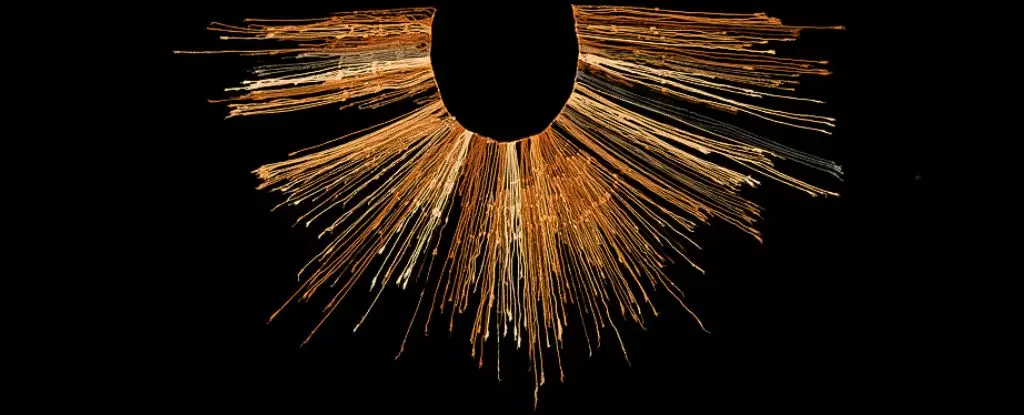The enigmatic khipu, a remarkable tool used for communication and record-keeping among Andean cultures, stands as a testament to the ingenuity of societies that flourished without written language. This intricate system of knotted cords has captivated researchers and historians alike, revealing insights into the economies, social structures, and traditions of the Inca Empire and earlier civilizations. Recent research has provided new links between two notable khipus, contributing to our understanding of this ancient numeric communication method and opening doors to deeper investigations into the cultural significance of these artifacts.
Khipus, traditionally composed of cotton and camelid fibers, served as an essential communication mechanism, especially in the vast Inca Empire that existed from approximately 1438 CE until the arrival of Spanish conquerors in the mid-16th century. The various knots and color combinations of these strings represented numeric values, allowing for complex record-keeping, including agricultural inventories, population data, and taxation records. Each khipu was crafted meticulously by specialized artisans known as khipukamayuqs, who made conscious decisions regarding materials, knot types, and color schemes.
As researchers dive into the purpose and implications of khipus, one compelling aspect has surfaced: their ability to encapsulate a wealth of information into a seemingly simple object. While early Spanish accounts highlighted their numeric significance, contemporary explorations have revealed much more about their potential roles in Andean society, suggesting that khipus may have conveyed not just raw data but narrative stories of communities and their resources.
Recent scholarly work has focused on the data derived from two distinct khipus discovered in northern Chile. These artifacts, documented in the 1970s by renowned ethno-mathematician Marcia Ascher and anthropologist Robert Ascher, offer an exciting opportunity for modern research. One khipu, noted for its immense size, stretches over five meters long and features more than 1800 cords. In contrast, its smaller counterpart, smaller yet rich in complexity, contains around 600 cords arranged in intricate patterns.
Upon analyzing the structural composition of both khipus, a fascinating pattern emerged: both employed red and white “divider” cords to organize the data into groups, highlighting a nuanced understanding of numeric allocation. This division sheds light on how these cultures compartmentalized information, potentially corresponding to distinct categories of resource management. This cross-referencing sheds new light on the relationship between size and complexity within the khipu format—illustrating that simplicity may sometimes emerge from a more complex narrative.
The advancement of digital tools has allowed researchers to manipulate and analyze khipu data far beyond the capabilities of past scholars. The ongoing digitization of khipu attributes enables a broader examination of historical patterns, leading to new interpretations of their content and purpose. This modern capability reveals connections between khipus that were previously unrecognized, suggesting that the smaller khipu might function as a summary or reinterpretation of the information encoded in the larger one.
Despite this newfound understanding, a key question remains unanswered: what exactly do these numbers represent? While researchers speculate that they may reflect agricultural data or resource distribution, definitive conclusions remain elusive. This ambiguity raises additional inquiries into the reasons behind maintaining alternative khipus that document the same information in different formats. The answer may reside in the social or administrative practices of the time, as different khipus could serve unique functions based on the audience and purpose of the record.
Today, only a fraction of khipus crafted throughout history remain intact, largely due to environmental factors and the disintegration of the institutions that used them after external conquest. Researchers estimate around 1,600 khipus exist today, with fewer than half digitized for academic exploration. The ongoing digitization efforts are crucial, as they hold the promise of unveiling further connections and expanding our understanding of the ancient Andean peoples.
As we continue unraveling the intricate weave of khipus, their significance extends beyond mere numbers. They symbolize an entire culture’s efforts to maintain order, communicate value, and record their lived experiences. As we delve further into their study, we hope that khipus will unlock treasures of knowledge about the sophisticated societies that once thrived in the Andes, highlighting their contributions to history and human communication. Through collaborative efforts in research and preservation, the story of khipus and their creators may resonate for generations to come, sparking curiosity and reverence for a past rich in innovation and tradition.

